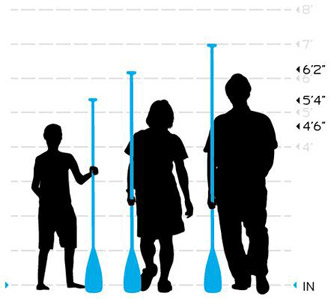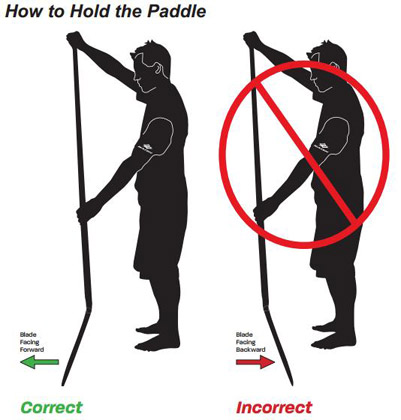How to Choose SUP Paddles
Just like you want a good pair of hiking boots to climb a mountain, a suitable paddle will make your time on the water the more enjoyable.
The best stand up paddle will be light enough for you to use all day and strong enough to handle any conditions you get into. It should be comfortable, with the right grip and length for you to enjoy your time on the water. So let’s look at what makes a great paddle.
MATERIALS
There are many different materials being used to make paddles and each of them has benefits and limitations:
Fiberglass: Used for both shafts and blades, fiberglass is stiff, light, and provides a great balance between value and performance.
Wood: Used to craft the whole paddle or sometimes just the blade, wood is reasonably lightweight, renewable, and provides warmth to the touch that can’t be matched with synthetic materials. Wood paddles are beautiful to look at, and make a great present to an enthusiast.
Carbon Fiber: Carbon fiber is the lightest and strongest material used in paddles. A lightweight paddle will cause less arm fatigue, especially on longer trips. If you spend a large amount of time on the water, the weight savings of a carbon fiber paddle may well be worth the extra expense.
Aluminum: An economical material used for shafts, aluminum is inexpensive but does have the drawback of being slightly heavier and cold to the touch
Plastic Another economical material, plastic is molded into blades and grips. It is affordable but heavier than other materials
LENGTH The most crucial part of choosing a paddle is getting the right length. A paddle that is too long will tire your arms as you hold them up too high. A paddle that is too short will stress your back as you bend forward to reach the water.

Adjustable Paddles Adjustable paddles have a shaft that can extend and lock in different lengths. If more than one person is going to use the paddle, then an adjustable shaft will suit you well. Adjustable paddles are perfect for families, lake houses, and demo fleets. Adjustable SUP paddles will be marginally heavier than the non-adjustable paddles.
Cut to length paddles. The best paddle is one made to fit you. A custom-length paddle is produced longer than you need and then cut in-store and the grip glued into place. Our staff have been trained to fit the paddle for your height and then cut to the right size.
BLADE SIZE Paddles are divided into two main groups, paddles for surf and paddles for cruising/touring. A surf paddle has a larger surface area for extra leverage against the water. Surf paddles are great for bracing and can also be used for white water SUP and SUP racing. A cruising SUP paddle has a smaller surface area which puts less stress on the arms while paddling long distances. There are also mid-sized paddles which fit the widest range of paddlers and work well for both surfing and touring.

WHY THE BEND? The bend just above the blade allows for a more efficient stroke. It may seem counter-intuitive, but the elbow of the bend points towards the rear of the SUP. This allows the blade to slip up out of the water at the end of the stroke as opposed to lifting water.
How to Hold a SUP Paddle AND BENT SHAFTS? A bend in the shaft, as opposed to a straight shaft, allows for a more neutral wrist position while paddling. The neutral position puts less strain on the wrist, which is great for long trips. It is more costly to produce a bent shaft, but if you plan to spend a lot of time on the water it may be worth it.
ADDITIONAL TIPS Remember that for general stand up paddling, you should choose a paddle that is between 8-10 inches taller than you are. At EMS we have committed to only stocking high quality paddles that can be relied on to never leave you up the proverbial creek. Consider the best paddle you can afford; it may be expensive now, but it will put a smile on your face with every stroke you take on the water.